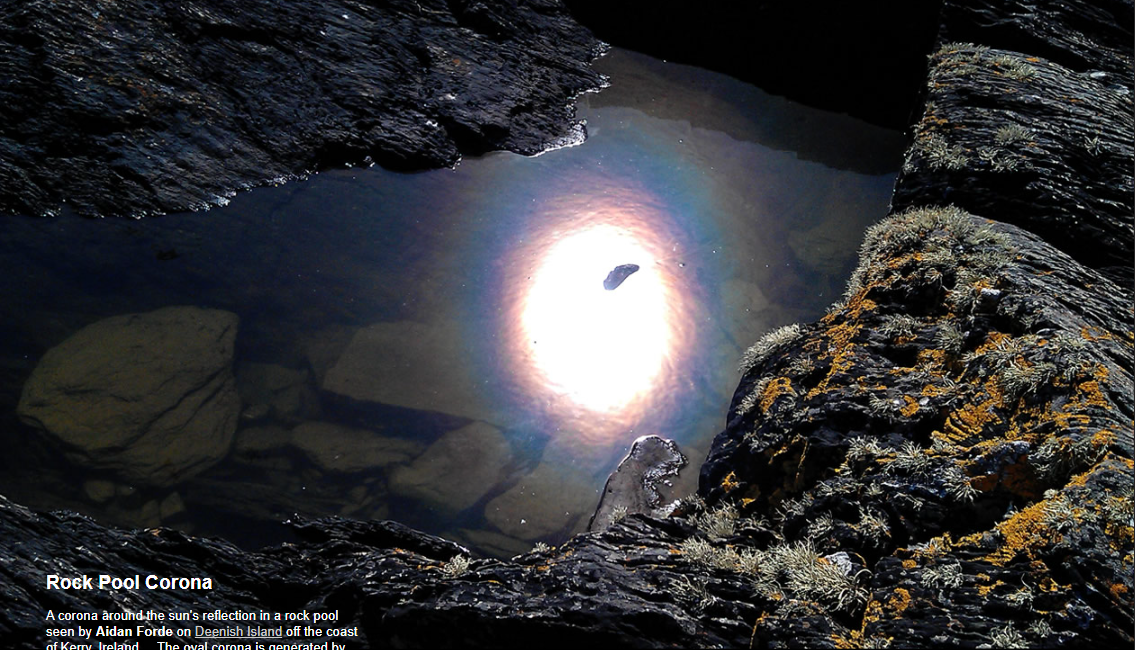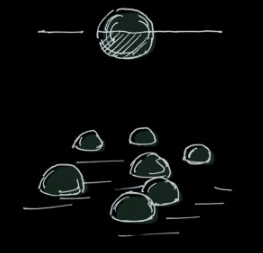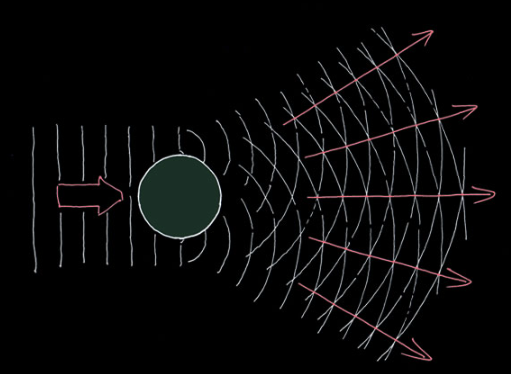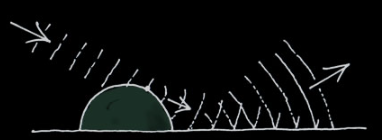Rock Pool Corona - OPOD
Rock Pool Corona - Exploring the Phenomenon
Have you ever come across a mesmerizing corona around the sun's reflection in a rock pool? This enchanting atmospheric optics phenomenon, known as the Rock Pool Corona, can be observed under specific conditions. In this article, we will delve into the details of this captivating event and uncover the science behind it.
The Rock Pool Corona is generated through the process of diffraction at the surface of the pool. When sunlight passes through small objects of similar size on the pond's surface, such as algae or other single-celled organisms, scattering and diffraction occur. These tiny scatterers cause the corona to appear vertically elongated, indicating that they appear horizontally elongated from the direction of the sun's rays.
To determine the diameters of these scatterers and potentially identify the algae responsible for creating the corona, we can analyze the angular size of the corona. However, it is unfortunate that many phone manufacturers omit the necessary data in image EXIF files and specifications, making it challenging to obtain precise information.
To understand the mechanism behind the Rock Pool Corona, let's consider two points on an algal cell or a water droplet scattering incident sunlight. These two points act as sources of outgoing spherical waves that eventually overlap. In certain directions, the crests of these waves align, resulting in brightness. However, in other directions, the waves are out of phase and destructively interfere.
In reality, light is scattered from all points on the surface of the scatterers, creating a bright central aureole fringed with red and surrounded by one or more colored rings. The size of the corona increases as the scatterers become smaller. When there is a range of scatterer sizes present, the diffraction pattern becomes blurred, and the rings may not be clearly visible.
A fascinating aspect of Aidan's corona, captured in the images, is that it is seen by reflection. The outgoing scattered waves are reflected by the surface of the rock pool. Another route for the formation of the corona is when the sun's rays are reflected upwards and then scattered by the algae. This dual reflection and scattering can lead to the emergence of additional fringes and colors on the water, known as Quêtelet fringes.
It's important to note that this article has been automatically converted from the old site and may not appear as intended. However, the essence of the captivating Rock Pool Corona phenomenon remains unchanged. To explore the original article and further details on this topic, you can visit the provided link.
In conclusion, the Rock Pool Corona is a breathtaking atmospheric optics event generated by diffraction at the surface of a rock pool. Scattering and diffraction caused by small objects, such as algae, result in a corona with distinct rings and colors. By understanding the underlying principles of this phenomenon, we can appreciate the beauty of nature's intricate optical displays.

Rock Pool Corona
A corona around the sun's reflection in a rock pool seen by Aidan Forde on Deenish Island off the coast of Kerry, Ireland. The oval corona is generated by diffraction at the pool surface. Image ©Aidan Forde, shown with permission.

Scattering and diffraction of sunlight by small objects all of similar size on the pond surface must have been responsible. The corona's vertical elongation tells us that they appeared horizontally elongated from the direction of the sun's rays.
Algae or other single celled organisms were likely responsible. Many are globular and lie half submerged.
The diameters of the scatterers can be determined from the angular size of the corona - we might then identify the algae. Unfortunately, 'phone manufacturers are not photographers and omit the necessary data in image EXIF files and specifications!

Imagine, as at left, just two points on an algal cell or a water droplet scattering the plane waves of incident sunlight. The two points become sources of outgoing spherical waves which eventually overlap. In some directions the crests of the two sets of waves are in phase to produce brightness. In other directions the waves are out of phase and they destructively interfere.
In reality, light is scattered from all points on the surface resulting in a bright central aureole fringed with red and surrounded by one or more coloured rings. The corona gets larger as the scatterers get smaller. When the scattering objects have a range of sizes the diffraction pattern is blurred and the rings are often not visible.

Aidan's corona is seen by reflection. The outgoing scattered waves are reflected by the pool surface.
There is another route - the sun's rays could be reflected upwards and then scattered by the algae.
Sometimes the waves from the two routes themselves interfere to produce extra fringes and colours on the water called Qu�telet fringes.
Note: this article has been automatically converted from the old site and may not appear as intended. You can find the original article here.
Reference Atmospheric Optics
If you use any of the definitions, information, or data presented on Atmospheric Optics, please copy the link or reference below to properly credit us as the reference source. Thank you!
-
<a href="https://atoptics.co.uk/blog/rock-pool-corona-opod/">Rock Pool Corona - OPOD</a>
-
"Rock Pool Corona - OPOD". Atmospheric Optics. Accessed on April 19, 2024. https://atoptics.co.uk/blog/rock-pool-corona-opod/.
-
"Rock Pool Corona - OPOD". Atmospheric Optics, https://atoptics.co.uk/blog/rock-pool-corona-opod/. Accessed 19 April, 2024
-
Rock Pool Corona - OPOD. Atmospheric Optics. Retrieved from https://atoptics.co.uk/blog/rock-pool-corona-opod/.